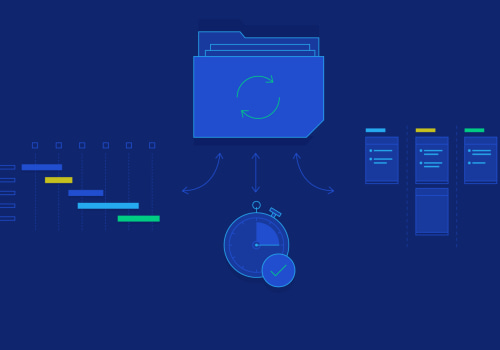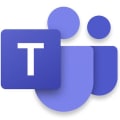Time tracking is an essential tool for businesses of all sizes, from small startups to large corporations. Having the right time clock features can make a huge difference in how efficiently your team works and how accurately you track employee hours. In this article, we’ll take an in-depth look at the features that make up a modern time tracking system, and how they can help you get the most out of your time tracking software. From scheduling and attendance tracking to payroll integration and reporting, we’ll cover all the essential features of time tracking software and explain how they can help you manage your team more effectively.
We’ll also discuss how to choose the right features for your business and the benefits of having a comprehensive system in place. So let’s dive in and explore the features of time tracking software. Time clock features are essential for any business that needs to track employee hours, manage attendance, or improve accuracy in payroll. There are a variety of time clock features available that can help businesses meet their goals, and it’s important to choose the right ones for your organization. One type of time clock feature is employee scheduling.
This feature allows you to create and manage employee schedules, ensuring everyone is working the right hours and that any overtime is tracked. This can help improve productivity and accuracy in payroll by ensuring employees are paid for the right number of hours worked. It can also help avoid overstaffing or understaffing by allowing you to quickly adjust the schedule as needed. For example, a restaurant might use employee scheduling to make sure there are enough servers on hand during peak times while avoiding overstaffing during slow periods.
Another type of time clock feature is time tracking. This feature allows you to track how long employees are working each day, as well as when they arrive and leave. This can help ensure employees are taking the appropriate breaks and not working overtime without authorization. It can also be used to monitor productivity and identify areas where employees need additional training or support.
For example, a construction company might use time tracking to monitor how long each task takes and identify areas where their processes can be improved. Other types of time clock features include attendance tracking, which allows you to easily monitor who is present at work each day; shift reminders, which can help ensure employees show up on time; and employee self-service, which allows employees to view their schedules and track their hours from any device. There are many benefits to using time clock features. In addition to improving accuracy in payroll and productivity, they can also help reduce costs by minimizing errors due to manual data entry and avoiding overstaffing or understaffing.
They can also help create a better work environment by ensuring employees are taking the appropriate breaks and not working overtime without authorization. When choosing time clock features for your business, it’s important to consider the size of your organization, the type of work performed, and the goals you’re trying to achieve. For example, if you’re a small business, you may not need all of the features available, while larger organizations may require more advanced features such as attendance tracking or employee self-service. Additionally, if your organization requires specific types of data or reports, you may need to select features that provide this type of functionality.
Once you’ve chosen the features you need, it’s important to implement them in a way that’s effective and efficient. Start by training employees on how to use the features and ensuring they understand why they’re important. You should also make sure the system is properly integrated with other software systems such as payroll or HR software, and that data is easily accessible from any device. Finally, it’s important to regularly review the data collected by the time clock system to ensure it’s being used properly and that it’s helping your organization reach its goals.
Types of Time Clock Features
Time clock features come in a variety of types, and businesses can use them to track employee hours, manage attendance, or improve accuracy in payroll.The most common types of time clock features include biometric time clocks, web-based time clocks, and mobile time clocks.
Biometric Time Clocks
Biometric time clocks are used to identify employees using fingerprint or facial recognition technology. These time clocks are becoming increasingly popular due to their accuracy and convenience. They allow businesses to accurately track employee attendance and hours worked, as well as eliminate the need for manual time sheets and paper-based records.Web-Based Time ClocksWeb-based time clocks are an online solution for tracking employee attendance and hours worked. These systems use cloud-based technology to allow employees to clock in from any device with internet access, including computers, tablets, and smartphones. Web-based time clocks also provide businesses with real-time reports and analytics on employee attendance and hours worked.
Mobile Time Clocks
Mobile time clocks are designed to be used on mobile devices such as smartphones or tablets.They allow employees to clock in from any location, making them ideal for businesses that have remote employees or require employees to work in different locations. Mobile time clocks also provide businesses with real-time reports and analytics on employee attendance and hours worked. These are just a few examples of the types of time clock features available to businesses. Depending on the needs of the business, there may be other options available, such as GPS tracking, online timesheets, or employee scheduling software.
By understanding the different types of time clock features available, businesses can choose the best option for their needs.
Choosing the Right Time Clock Features
Choosing the right time clock features for your business can be a daunting task. It’s important to consider the needs of your business, budget, and the types of features that are available. Here are some factors to consider when choosing time clock features:Cost:Cost is an important factor to consider when selecting time clock features. Some features, such as time-tracking and attendance management, may require additional funds.Be sure to factor in the cost of installation, maintenance, and any upgrades when choosing the best time clock features for your business.
Ease of Use:
When selecting time clock features, consider how easy they are to use. If you need employees to use the features, make sure the system is user-friendly and easy to understand. If your employees need extra training or support, factor that into the cost of the system.Reporting Capabilities:
Time clock features should also offer reporting capabilities. Reports should include attendance, hours worked, and other important data.Look for time clock features that offer customizable reports that can be tailored to your specific needs.
Integration:
If you’re using other software or systems in your business, look for time clock features that integrate with them. This will save you time and money by eliminating the need to manually enter data or manually transfer it from one system to another.Security:
Finally, consider security when selecting time clock features. Ensure that the system is secure and that your data is protected from unauthorized access. Look for features such as encryption and two-factor authentication to keep your data safe.Implementing Time Clock Features
Implementing time clock features in a way that’s effective and efficient requires understanding of the different types of time clock features and how they fit into your business.Depending on the size and scope of your business, you may need to implement different features for different departments or locations. It’s important to be aware of the features available, as well as the cost associated with each feature. The first step in implementing time clock features is to assess the current needs of your business. Consider how tracking employee hours, managing attendance, and improving accuracy in payroll will help your business. Consider any other factors that may be necessary, such as tracking employee productivity or assigning tasks to employees.
Once you’ve identified the needs of your business, you can begin to look at the different types of time clock features available. Time clock features typically fall into three main categories: attendance tracking, payroll processing, and scheduling. Each category has its own set of features that can be used to improve efficiency and accuracy in managing employee hours. For example, attendance tracking features can be used to track employee hours worked, late arrivals, and early departures. Payroll processing features can be used to calculate wages, generate pay stubs, and process taxes.
Scheduling features can be used to assign tasks to employees, set shift times, and keep track of vacation days. When selecting time clock features for your business, consider the cost associated with each feature. While some features may have a higher upfront cost, they may save you time and money in the long run. Additionally, consider how easy the feature is to use. Features that are complicated or difficult to use may not be worth the extra cost. Once you’ve selected the appropriate time clock features for your business, it’s important to properly implement them.
Training employees on how to use the new system is essential for ensuring accuracy and efficiency. Additionally, it’s important to monitor usage of the system to ensure accuracy and ensure that employees are using the system correctly. By understanding the different types of time clock features available and how they fit into your business, you can implement them in a way that’s effective and efficient. By properly training employees on how to use the system and monitoring usage of the system, you can ensure accuracy and efficiency when tracking employee hours.
Benefits of Time Clock Features
Time clock features offer numerous benefits to businesses. These features provide a way to accurately track employee hours, manage attendance, and improve the accuracy of payroll.In addition to these tangible benefits, time clock features also help businesses save money by reducing the need for manual data entry or hiring extra staff to manage time tracking. Time clock features are also beneficial because they can help businesses ensure compliance with labor laws and regulations. They provide an easy way for employers to track their employees’ hours to prevent any potential violations. Time clock features can also provide a more accurate way for employers to pay their employees.
Another benefit of time clock features is that they can streamline the payroll process and reduce errors. Accurate time tracking can help employers accurately calculate employees’ wages, overtime pay, and other pay-related benefits. This helps ensure that employees are being paid fairly and accurately. Finally, time clock features can help employers better understand employee performance and productivity. By tracking the amount of time an employee spends on a task, employers can measure their performance more accurately.
This helps employers identify areas where employees need additional training or support. Time clock features are essential for any business that needs to track employee hours, manage attendance, or improve accuracy in payroll. This article has explored the types of time clock features available, the benefits of these features, and how to choose the best ones for your business. By implementing time clock features, businesses can streamline their operations, improve accuracy in payroll processing, and save time and money. It is important to thoroughly understand and utilize time clock features to ensure a successful implementation. We encourage readers to take action by implementing time clock features in their business, in order to maximize efficiency and cost-effectiveness.
By leveraging the various types of time clock features available, businesses can gain a better understanding of employee attendance and performance.








Leave Message